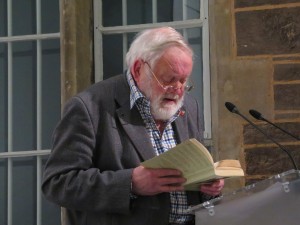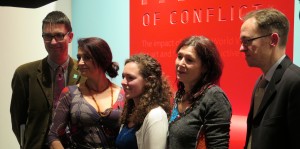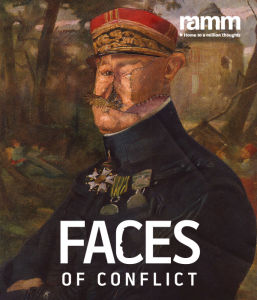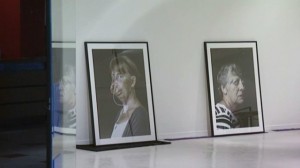The 1914FACES2014 / Saving Faces exhibition, curated by Cristina Burke-Trees, opened on 5th June 2014 in the Chapel Gallery, Hannah’s at Seale Hayne.
The exhibition features work by Paddy Hartley, artist in residence, including a uniform sculpture based on the life story of Walter Yeo. Yeo was badly burned at the battle of Jutland in WWI and Paddy’s sculpture refers both to Yeo’s wartime experiences and the pioneering facial surgery he underwent after returning home.

The SAVING FACES art project, meanwhile, presents us with a unique opportunity to study the present-day collaboration between the maxillofacial surgeon Professor Iain Hutchison (St Bartholomew’s) and the acclaimed Glaswegian portrait painter Mark Gilbert.
Iain Hutchison established the Saving Faces project in 1999, funded by a small legacy following the death of his mother, Dr. Martha Redlich. Painter Mark Gilbert took up the offer to work within the surgical department of St Bartholomew’s and soon started painting the portraits of patients before and after (and occasionally during) facial surgery. At the outset it was hoped that the project would illustrate, in a form that was accessible to the general public, what is possible with modern facial surgery, and show that people with facial disability are able to enjoy happy, successful and fulfilled lives. Iain also wanted to give an artist the opportunity to paint these unique faces as they progressed through their surgical and emotional journey. Finally he felt that sitting for and seeing their portraits might have a cathartic effect, allowing the patients to come to terms more rapidly with their altered appearance.
Our presentation of the Saving Faces exhibition is part of the enquiry into questions of social reintegration which we are conducting within 1914FACES2014. On 16th June, we put the exhibition into dialogue with a workshop on Facial difference and social (re)integration. The Psychology sub-project of 1914FACES2014 considers the factors that affect social relationships between people with visible facial difference (VFD) and those without this difference, and these will be discussed by researchers in Social Psychology and other experts including Professor Hutchison. In its concern with social reintegration and rehabilitation, this event draws upon the rich history of Hannah’s at Seale Hayne, including its brief spell as a military hospital for soldiers returning from the trenches with shell-shock.

Acknowledgements: our thanks to Clemency Horsell, Suzanne Steele and, above all, Cristina Burke-Trees. Grateful thanks to Paddy Hartley, Iain Hutchinson and Saving Faces.
Images: SM Steele / DJ






